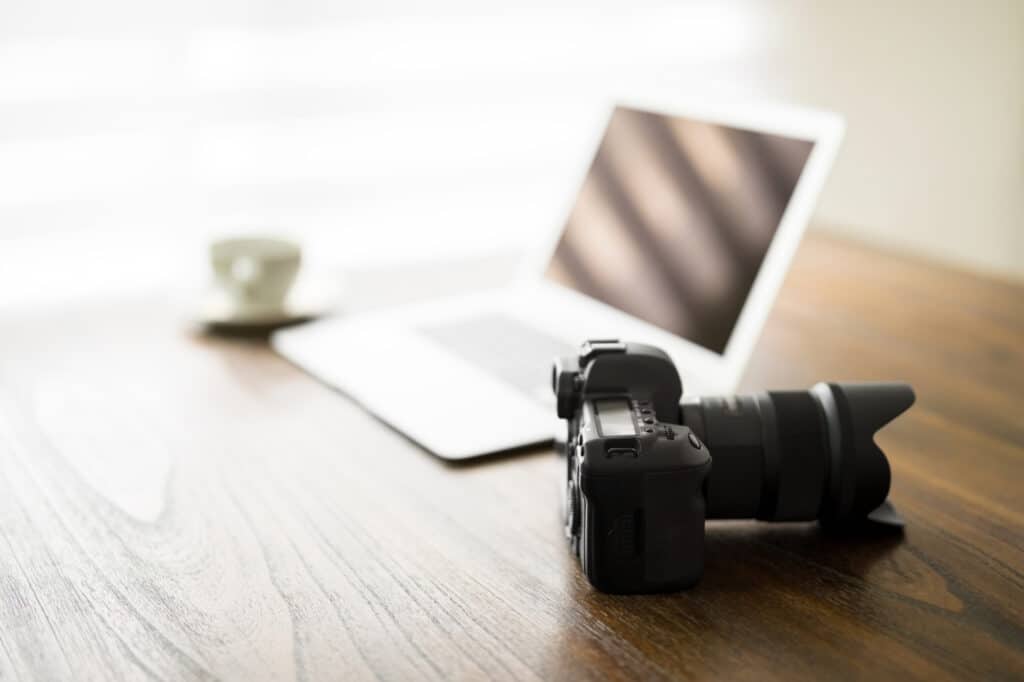I love photographer websites! Great photography can make your website pop, but there are a few additional tips that all photographers should keep in mind for their websites.
Add More Text
I’ve heard many photographers say that their “photos speak for themselves.” While that’s partially true, it’s also helpful to have text on your pages that people can read and search engines can crawl and index.
- Describe each of your services in depth on a services page or their own pages. Answer all potential questions for each type of session you offer including where, when, what’s included, how much it is and how people can schedule. As you grow and get additional questions, add those as well.
- Create a really robust contact page with everything potential clients may need — a great contact form, phone number, location, Google map (showing your GMB listing + reviews, not just your address), social media links, etc. Make it really easy for them to get in touch with you.
- Every page should have a call to action (CTA). At the end of each page, think about what you want the viewer to do next.
- Don’t try to jam any keywords in, but do have text on your site that includes where you’re located. Two great ways to do this are to 1) write blog posts about past and upcoming sessions (see below) and 2) include a general “elevator pitch” on your home page. Example Photography LLC offers family and senior portraits in the greater Pittsburgh area.
Prep Those Photos
The photos that you take on your professional camera are amazing but WAY too big for the web. Large photos will slow your site down significantly and could cause people to bounce off your site before viewing everything you want them to see.
To prepare your photos for the web:
- Every image should be less than 1MB in size (and preferably less than 500KB if possible)
- Every image should be less than 2500px in both directions (at 72 or 144 dpi)
- Compress images with a plugin like ShortPixel or with a service like tinyjpg.com
- Use a descriptive naming convention for all of your images. For example
date-name-venue-type.jpg - Add rich, descriptive alt text and captions to your images on upload
Pay Attention to SEO
Hopefully you’re using an SEO plugin and taking full advantage of the features! My favorite is SEOPress; the free version allows you to:
- Set meta descriptions on your pages and posts
- Set noindex on specific pages like landing pages and thank you pages (pages that you don’t want to appear in search results)
- Create a sitemap to submit to Google Search Console (this tells Google — hey, I’m ready for you to look at my site!)
- Configure your knowledge graph, set your social networks and choose a default featured image
- Add analytics (without requiring an extra plugin); you can also create a cookie bar if needed
The pro version of SEOPress allows you to:
- Add local business schema to your site
- Enable 404 monitoring, redirect 404s to a specific page and create redirections
- Scan for broken links
Try Your Hand at Blogging
You may not love the idea of blogging, but I promise it’s really easy to start. Here are a few ideas on what to write about.
Recap an Individual Session
Individual sessions are GREAT content for your blog. Include:
- Where and when you took the photos
- A bit about the people in the photo including why they wanted a session
- Something interesting about the session itself
- A call to action on how someone can book this type of session with you
- Anything else you can think of!
Feature a Type of Session
- Locations where you typically shoot
- How you determine the best days including lead time and a bit about the weather if applicable
- How clients should dress and how they can best prepare for a session
- Examples of past sessions
- A call to action on how someone can book this type of session with you (or the different sessions you offer)
- Anything else you can think of!
Promote Something New
Offering prints now? A new type of session? Longer sessions or more digital downloads? Feature it on your blog.
go Behind the Scenes
People LOVE behind the scene blog posts, especially photos of the photographer. Talk about your equipment, your creative process, your studio, your history — anything!
A Few Last Tips
Use links to your advantage. Link to past blog posts, specific services and/or your contact page. Always give the viewer something to do next, especially at the end of a post.
When you write a blog post, don’t forget to share it on social media (driving people back to your site). Also share it with the people who are featured in the blog post (because they will share it with all of their friends as well).
Taking time to prepare your images for the web, add lots of juicy content, optimize for search engines and promote on social media will grow your business by getting your amazing images in front of more potential clients.
